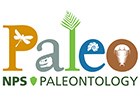Part of a series of articles titled Park Paleontology News - Vol. 09, No. 1, Spring 2017.
Article
Type specimens and fossil species named from the National Parks
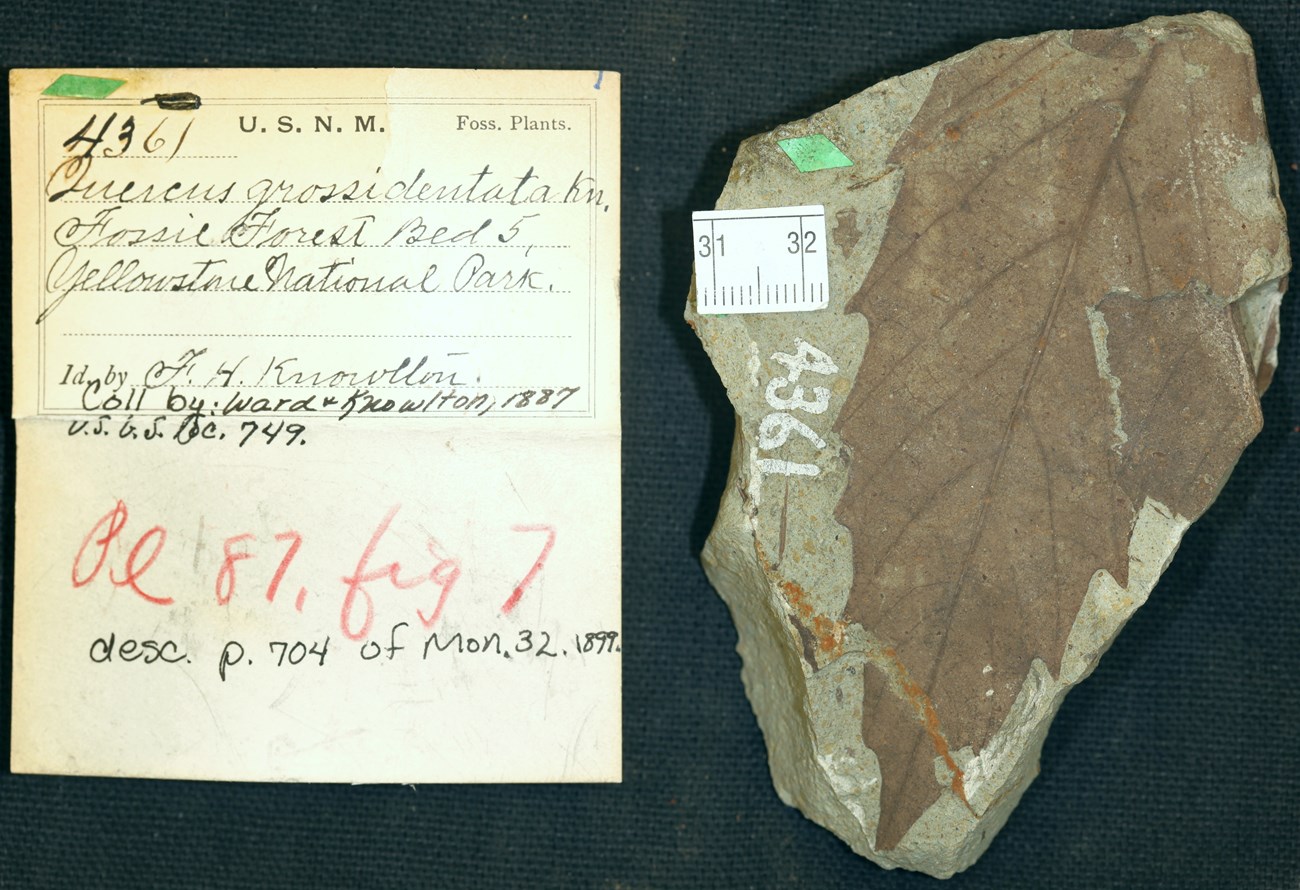
Photo by Justin Tweet, courtesy of Smithsonian Institution.
- Geological time: the geologic record of each fossil park was broken down by epoch, with epochs coded for the presence, absence, or possibility of fossils;
- Repositories: each repository known to hold fossils from specific parks was recorded;
- Taxonomy: the fossil record of each park was broken down into a number of different taxonomic groups;
- And the subject of this article, type specimens.
In order to uncover National Park Service fossil type specimens, we conducted exhaustive literature searches using a variety of clues. There were a few existing sources for specific parks, including the invaluable Florissant fossil database which saved us immeasurable time dealing with the approximately 1,700 species associated with Florissant Fossil Beds National Monument. Generally we started by searching for geological publications mentioning parks or landmarks now within parks. Even if a relevant publication did not specifically deal with naming new species, it often included citations that led us to publications that did. It would have been virtually impossible to make this inventory before the growth of the Internet.
Once we had a potential hit, we checked the locality information against our maps to determine if the fossil was found within or outside a park. In older works, especially before about 1920, researchers were often vague about localities. As a result, we have many species that we can reliably attribute to an area including a park, but cannot determine the exact position. For example, there are many type specimens simply from the White River Badlands (Badlands National Park) or Florissant (Florissant Fossil Beds National Monument). We have kept records of these as well as those that we can attribute to a park, but we keep the two categories separate. Taxonomy was recorded as originally given for consistency, instead of trying to locate and evaluate all possible later opinions. Locality and repository data were supplemented as needed with other sources. Again, this was most necessary when dealing with older publications, which often did not include repository information. In a handful of cases we cannot determine what the type specimen for a species was, usually because the fossil was lost or destroyed without ever having been cataloged.
Through March 2017, we have recorded 4,920 species, subspecies, and varieties based on fossils found within, potentially within, or historically associated with 75 National Park Service units, two affiliated units, and the former Fossil Cycad National Monument. Of this total, 2,280 taxa can be reliably attributed to National Park Service units. The most productive unit is Florissant Fossil Beds National Monument, with 429 confirmed and 1,314 potential species, about 35% of the total. All seven regions and 27 of 32 Inventory & Monitoring networks are represented. There is a steady trickle of additions from three sources: previously overlooked publications, newly described species, and species from new park units or additions to existing parks. These results include everything from Mesoproterozoic stromatolites in Glacier National Park to an extinct Holocene rabbitbrush found in a packrat midden from Chaco Cultural National Historical Park, from microfossils in a deep well boring at Cape Hatteras National Seashore to giant Cretaceous vertebrates at Big Bend National Park, and practically everything between. Descriptive work began in the 1820s and continues today.
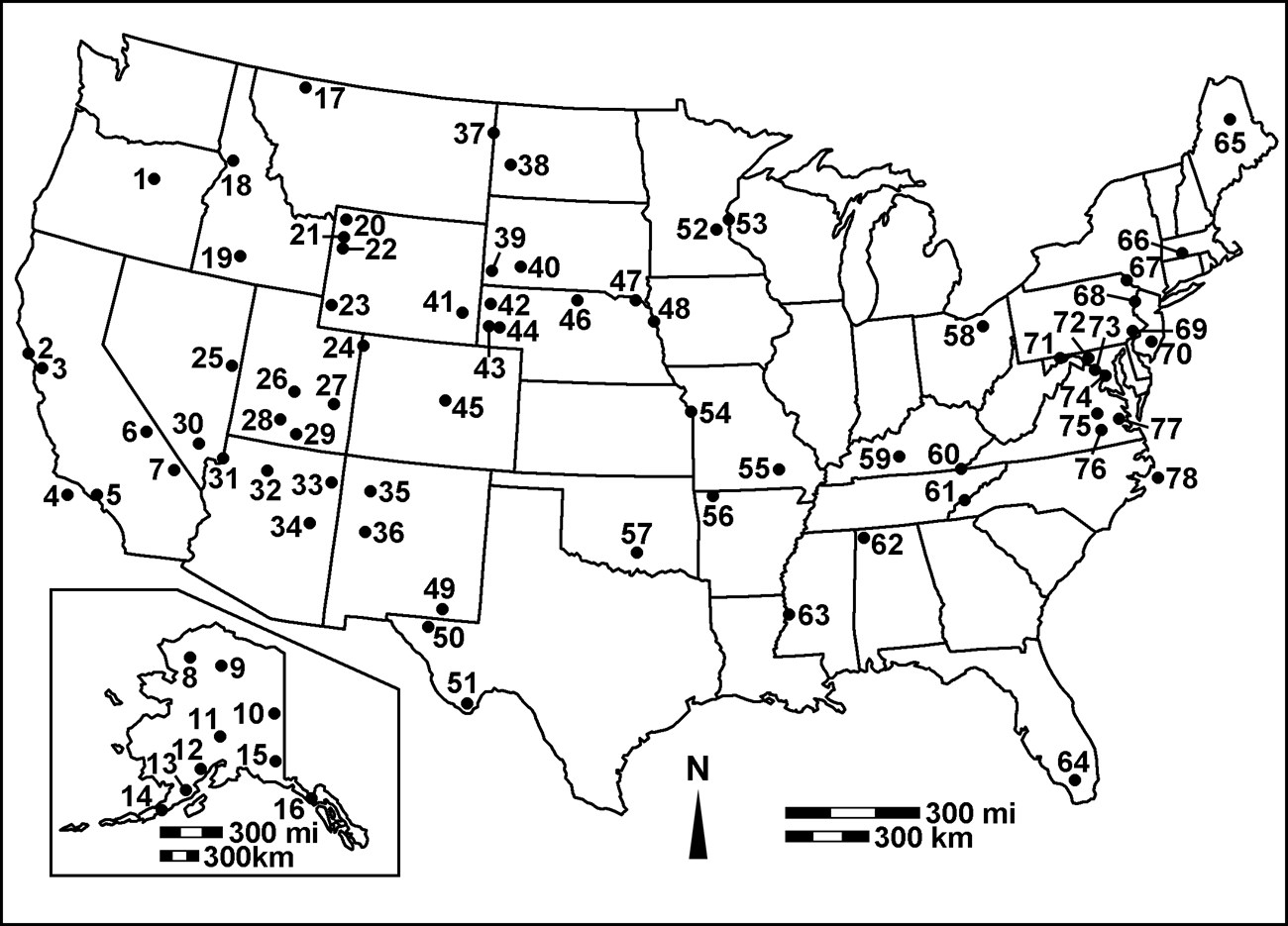
National Park Service units associated with name-bearing type fossil specimens, adapted from Tweet et al. (2016). 1. JODA; 2. PORE; 3. GOGA; 4. CHIS; 5. SAMO; 6. DEVA; 7. MOJA; 8. NOAT; 9. GAAR; 10. YUCH; 11. DENA; 12. LACL; 13. KATM; 14. ANIA; 15. WRST; 16. GLBA; 17. GLAC; 18. NEPE; 19. HAFO; 20. YELL; 21. JODR; 22. GRTE; 23. FOBU; 24. DINO; 25. GRBA; 26. CARE; 27. CANY; 28. BRCA; 29. GLCA; 30. TUSK; 31. LAKE; 32. GRCA; 33. CACH; 34. PEFO; 35. CHCU; 36. ELMA; 37. FOUS; 38. THRO; 39. Fossil Cycad National Monument (abolished 1957); 40. BADL; 41. FOLA; 42. AGFO; 43. SCBL; 44. CHRO (NPS-affiliated site); 45. FLFO; 46. NIOB; 47. MNRR; 48. LECL; 49. CAVE; 50. GUMO; 51. BIBE; 52. MISS; 53. SACN; 54. SAFE; 55. OZAR; 56. PERI; 57. CHIC; 58. CUVA; 59. MACA; 60. CUGA; 61. GRSM; 62. NATR; 63. VICK; 64. BICY; 65. KAWW; 66. SPAR; 67. UPDE; 68. DEWA; 69. VAFO; 70. PINE (NPS-affiliated site); 71. POHE; 72. ANTI; 73. CHOH; 74. FOFO; 75. RICH; 76. PETE; 77. COLO; 78. CAHA.
NPS map-illustration
Below is a selection of National Park Service type specimens, chosen to represent a variety of taxonomic groups, geologic periods, and geographic locations.
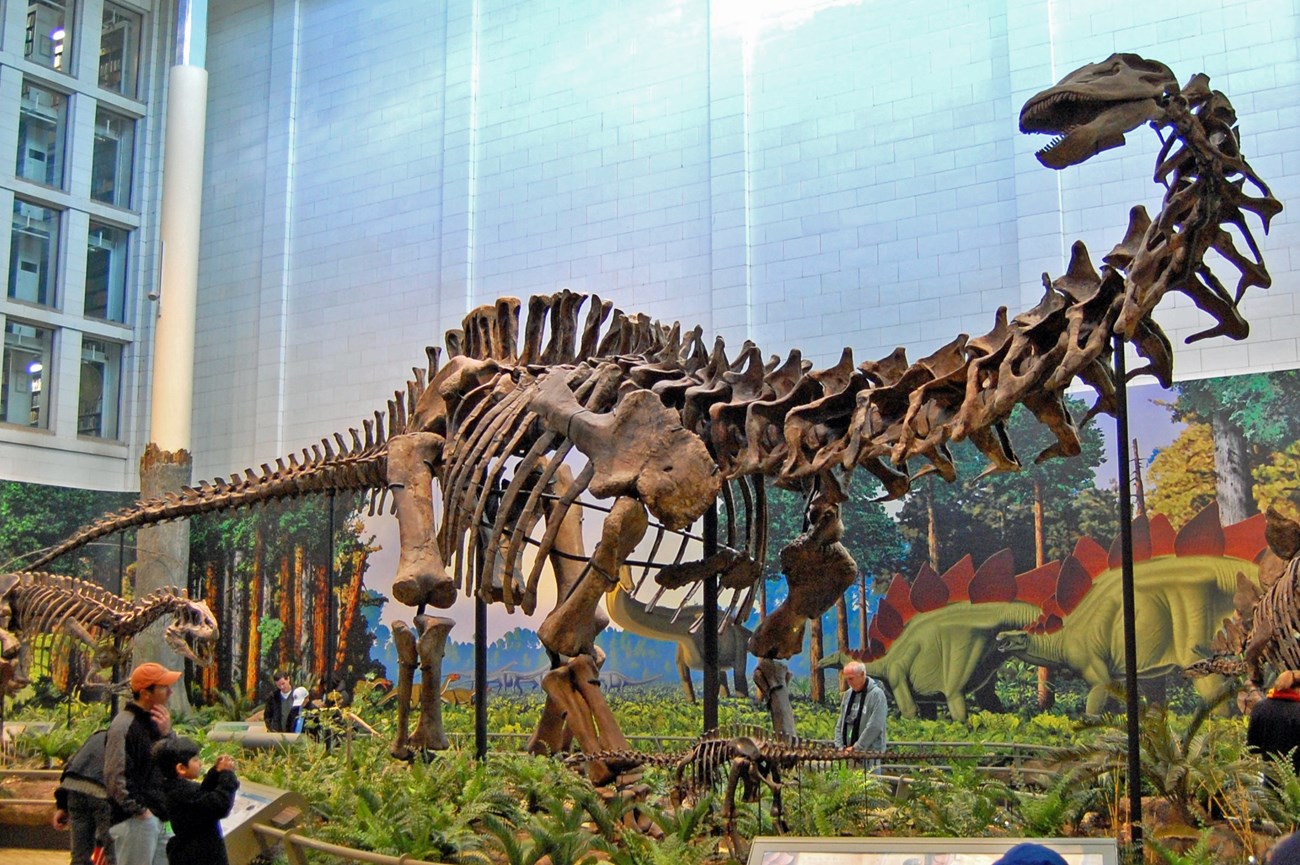
Photo taken by Tadek Kurpaski, CC 2.0 BY, from https://commons.wikimedia.org/w/index.php?curid=8698637.
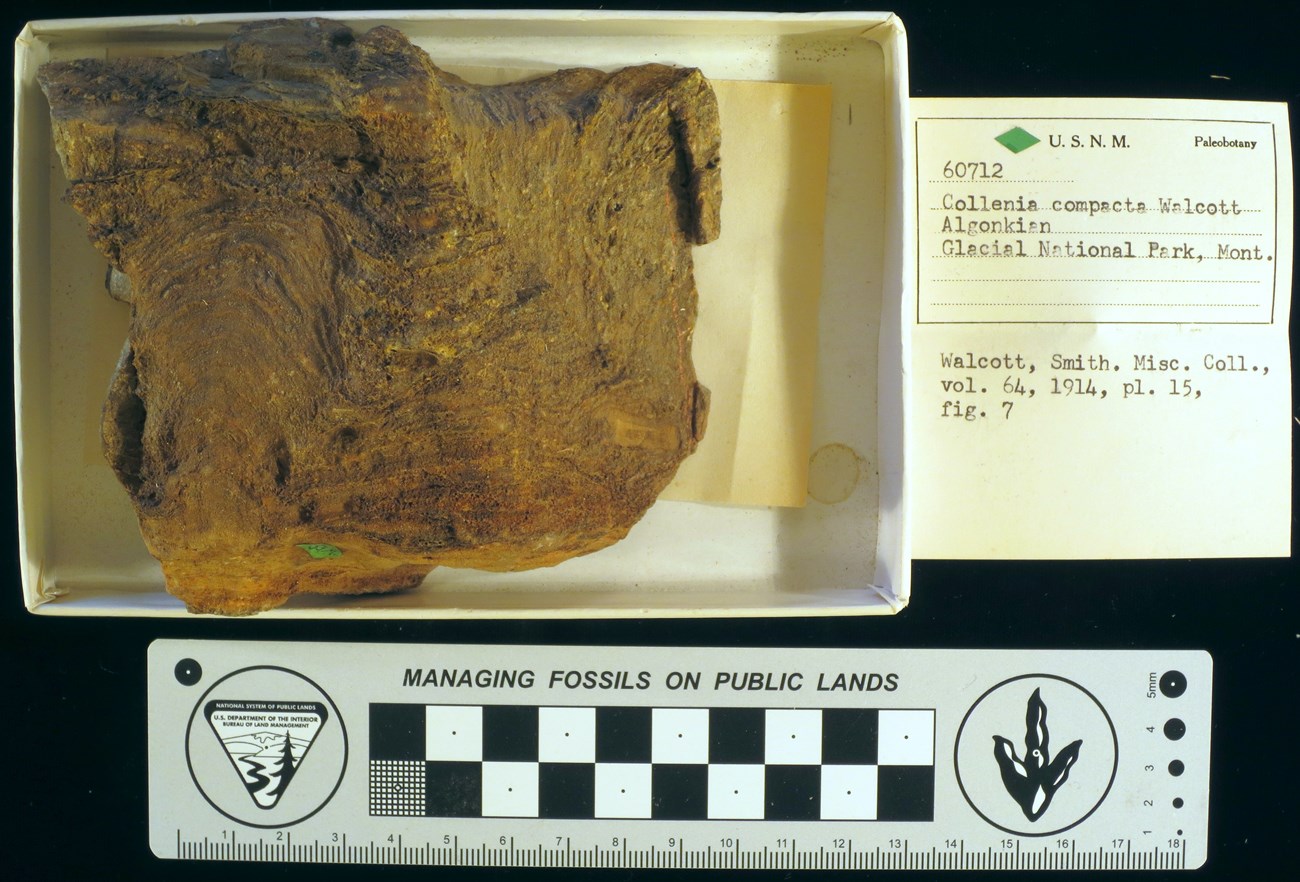
Photo by Justin Tweet, courtesy of Smithsonian Institution.
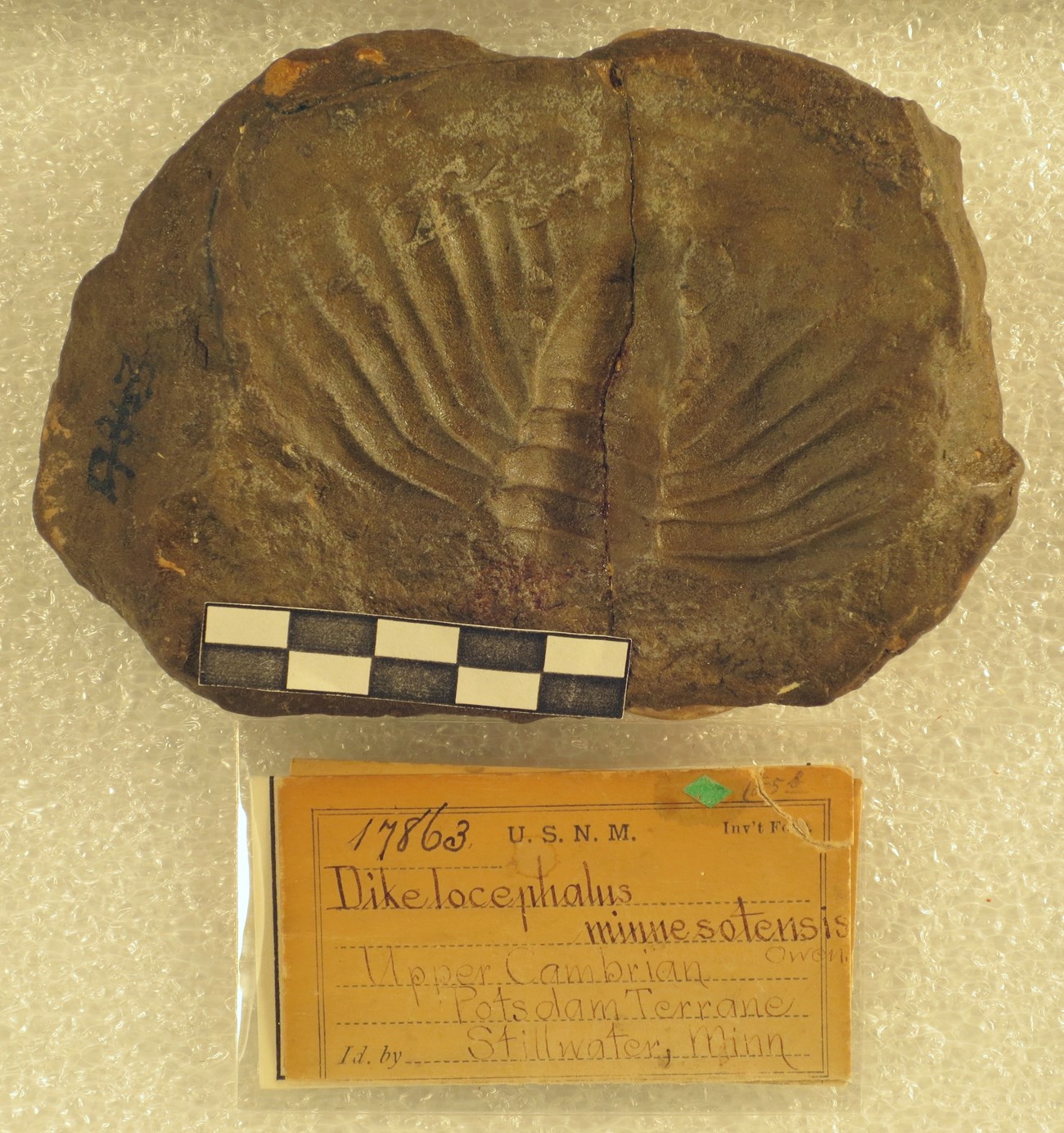
Photo by Justin Tweet, courtesy of Smithsonian Institution.
References
Tweet, J. S., V. L. Santucci, and H. G. McDonald. 2016. Name-bearing fossil type specimens and taxa named from National Park Service areas. Pages 277–288 in S. G. Lucas and R. M. Sullivan, editors. Fossil Record 5. New Mexico Museum of Natural History and Science, Albuquerque, New Mexico. Bulletin 74. Available at http://npshistory.com/publications/paleontology/nmmnhs-73-277.pdf (accessed March 2017).Tags
Last updated: April 22, 2020

